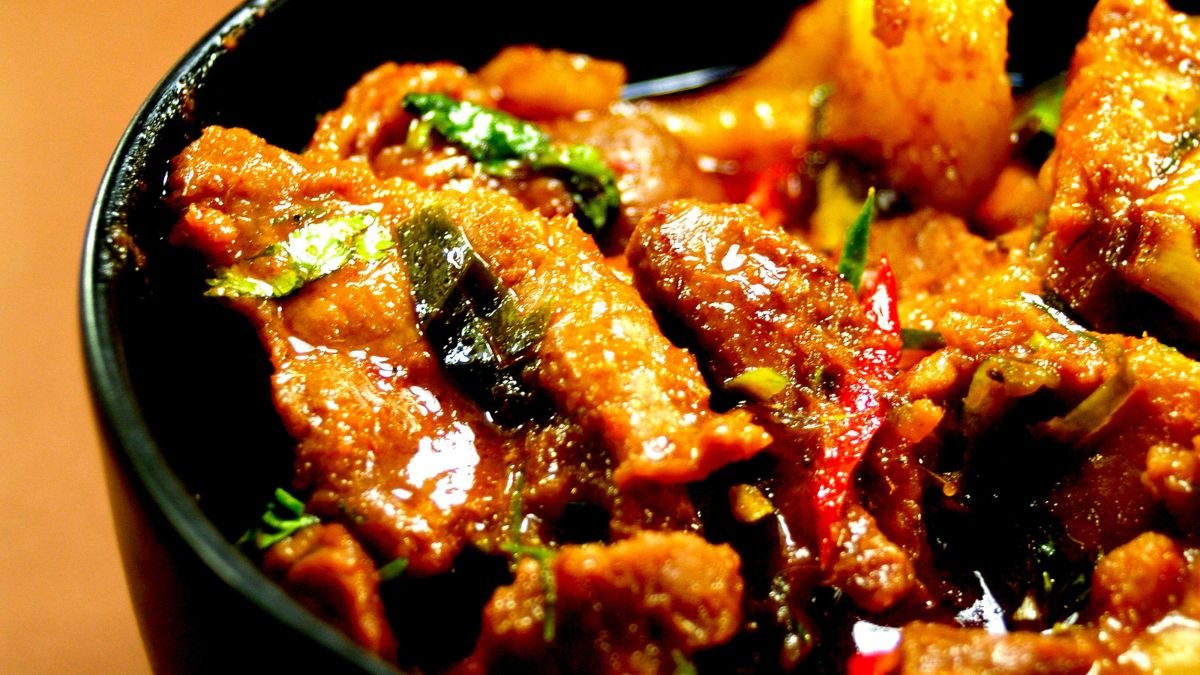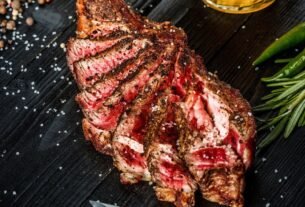Introduction
Have you ever wondered what truly defines the flavors of Brazil? Brazilian cuisine is a vibrant fusion that tells the story of its rich history, blending indigenous, African, and European influences into distinct flavors that are both unique and captivating.
This culinary tapestry weaves together the ingredients and techniques brought by various cultures, including the use of cassava, tropical fruits, and spices, resulting in a gastronomic experience that is both rich and diverse. The indigenous peoples contributed staples like corn and beans, while African influences introduced bold flavors and cooking methods that transformed everyday meals into extraordinary feasts.
This culinary journey promises to delight your palate and expand your horizons as you explore seven iconic Brazilian dishes that are as diverse as the country itself, each with its own story and significance, reflecting the regions from which they originate.
Get ready to indulge in a world of Brazilian food that sparks curiosity and satisfies cravings, showcasing everything from hearty stews to refreshing salads, all infused with the vibrant spirit of Brazil’s cultural heritage! Each dish is not just a meal but a celebration of the country’s rich traditions, inviting you to experience the warmth and hospitality of Brazilian culture.
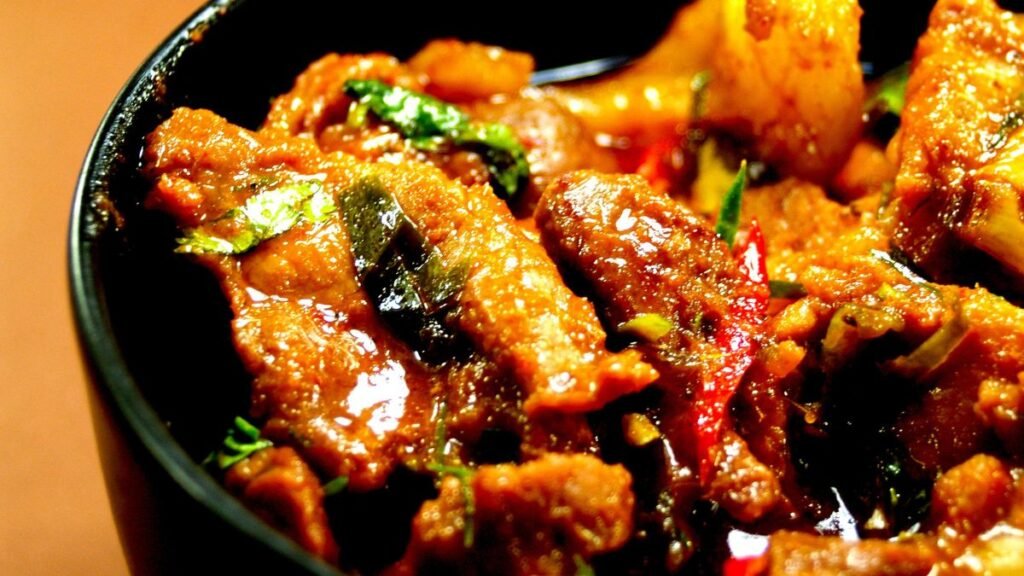
Key Takeaways
- Brazilian cuisine features a unique blend of indigenous, African, and European culinary traditions.
- Each dish tells its own story, reflecting the country’s rich cultural diversity.
- From savory meals to delectable desserts, Brazilian food offers a wide range of flavors and textures.
- Exploring Brazilian dishes invites you to experience the nation’s vibrant history and geographical vastness.
- Understanding these iconic Brazilian dishes enhances your appreciation of the country’s culinary landscape.
- Brazilian cuisine is perfect for adventurous eaters seeking new and exciting flavors.
Exploring the Rich Flavors of Brazil
Brazilian cuisine offers a fascinating glimpse into the nation’s vibrant culture and diverse heritage. The combination of indigenous ingredients, African cooking techniques, and European influences creates a unique culinary landscape that reflects the country’s history.
Understanding the complexities of Brazilian food history invites a deeper appreciation for its regional dishes, which vary significantly across the nation. Each region of Brazil boasts its own distinct flavors and traditional recipes, shaped by local ingredients and historical influences. For instance, the Amazon region is rich in exotic fruits and fish, while the coastal areas highlight seafood and tropical produce, showcasing the country’s geographical diversity.
History and Influences of Brazilian Cuisine
The roots of Brazilian cuisine history are intertwined with the country’s cultural influences. Indigenous peoples introduced staples such as cassava, which remains a key ingredient in many dishes today. This versatile root vegetable is used in various forms, from flour to side dishes, highlighting its significance in Brazilian cuisine.
The arrival of African slaves introduced new cooking techniques and rich flavors, particularly through the use of palm oil and spices, which are reflected in many beloved recipes. These influences are evident in dishes such as acarajé and moqueca, which highlight the profound connection between African heritage and Brazilian culinary practices. European colonization also played a crucial role, incorporating ingredients such as sugarcane and livestock, which further enhanced the culinary richness of Brazil.
The blending of these diverse influences has resulted in a vibrant and dynamic food culture that continues to evolve, reflecting the nation’s ongoing journey of identity and expression.
Regional Variations in Brazilian Cuisine
Brazilians take pride in their regional dishes, shaped by geography and cultural diversity. The Northeast is known for its spicy, bold flavors, showcasing dishes that emphasize local seafood and wild game, such as the famous moqueca, a fish stew infused with coconut milk and dendê oil. In contrast, the South boasts hearty, meat-based fare that is emblematic of the gaucho culture, featuring grilled meats known as churrasco, often accompanied by chimichurri sauce.
From fresh tropical fruits like açaí and guava to diverse spice blends that reflect the influence of indigenous peoples and immigrant communities, the country’s extensive culinary repertoire reveals the profound impact of its indigenous ingredients and historical influences, creating a rich tapestry of flavors that varies from region to region.
Feijoada: The Heart of Brazilian Cuisine
Feijoada stands as a culinary symbol of Brazil, celebrated for its rich flavors and heartiness. Commonly recognized as the national dish of Brazil, this renowned black bean stew is prepared using a diverse selection of pork cuts, including sausage, ribs, and bacon, often complemented by beef and sometimes even smoked meats, which enhance its depth of flavor.
Each ingredient plays a vital role, contributing to the dish’s complex taste and texture, making it an integral part of Brazilian culinary tradition. The preparation of feijoada is often a communal event, where families and friends come together to cook and enjoy this hearty meal, further solidifying its status as a dish that embodies Brazilian culture and togetherness.
What is Feijoada?
This iconic dish reflects Brazil’s history and the blending of cultures, serving as a delicious testament to the country’s diverse culinary landscape. Feijoada combines various influences, primarily from Portuguese cuisine, to create a unique and flavorful stew that has become a staple throughout Brazil.
Typically cooked with black beans, the dish showcases various pork cuts, including not only sausages and ribs but also other cuts like pork shoulder and smoked meats, which simmer together for hours to produce a comforting meal enjoyed by many across the nation. The slow cooking process allows the flavors to meld beautifully, creating a rich and hearty dish that is often served with an array of side dishes, enhancing its appeal.
Cultural Significance of Feijoada
Feijoada is more than just a meal; it symbolizes unity and celebration within Brazilian society, acting as a focal point for gatherings and social interactions. Traditionally served on Wednesdays and Saturdays, it creates an opportunity for families and friends to come together and share a delicious feast, often accompanied by lively conversation and laughter.
Accompaniments such as rice, collard greens, orange slices, and farofa enhance the dining experience, showcasing the cultural aspects of this beloved dish. Its role in Brazilian culture extends beyond mere sustenance, embodying a sense of community and shared heritage, as it is often prepared in large quantities to feed many, reinforcing bonds among those who partake in the meal.
Pão de Queijo: Cheesy Delights You Can’t Resist
Pão de Queijo, or Brazilian cheese bread, showcases the delightful fusion of textures and flavors that captures the essence of Brazilian cuisine. Made primarily from tapioca flour, these cheesy snacks are not only gluten-free but also deliver a unique chewy and airy sensation that makes each bite a joyful experience.
The subtle richness of the cheese, often enhanced by the use of traditional varieties like queijo minas, adds depth to the flavor profile, creating a perfect balance of savory and comforting. Combining simple yet rich ingredients, they make an irresistible addition to any meal, especially during breakfast, where they are often served warm, straight from the oven, inviting everyone to indulge in their deliciousness.
Ingredients and Preparation of Pão de Queijo
To create authentic Pão de Queijo, the key ingredients include:
- Tapioca flour
- Milk
- Eggs
- Cheese (traditionally, queijo minas, a soft and flavorful cheese)
- Salt
The preparation process is straightforward yet crucial for achieving optimal results. First, heat the milk and combine it with tapioca flour and salt. Once the mixture has cooled, incorporate the eggs and cheese, mixing until a soft, dough-like consistency forms. Shape the dough into small balls and bake until golden brown. The outcome is a batch of warm, cheesy bread that pairs perfectly with a hot cup of coffee or freshly squeezed juice.
When and How to Serve Pão de Queijo
Pão de Queijo is a staple during Brazilian breakfast, frequently enjoyed as part of a leisurely weekend meal. Its versatile nature allows it to be served as a savory appetizer or a delightful snack throughout the day.
For an elevated experience, consider offering variations such as bacon-stuffed Pão de Queijo or even sweet versions featuring chocolate. These adaptations broaden the appeal of this classic dish, making it popular among diverse audiences worldwide.
Coxinha: A Delectable Street Food
Coxinha distinguishes itself as a beloved type of Brazilian street food, particularly known for its resemblance to a chicken drumstick. This snack food consists of shredded chicken cooked with spices and cream cheese, all enveloped in a crispy dough shell. Its golden-brown color and crunchy exterior perfectly complement the savory filling inside.
Often found in bakeries and at street stalls throughout Brazil, coxinha serves as one of the most popular Brazilian snacks. Visitors can enjoy this delicious treat while exploring various neighborhoods, making it a staple for both locals and tourists. The preparation involves deep-frying, which lends coxinha its distinctive crunch and taste. To explore more about how to create these delightful chicken croquettes, refer to the recipe guide available here.
The significant appeal of coxinha lies in its versatility. Whether served at casual gatherings or elegant events, these chicken croquettes are a hit at any occasion. Additionally, they can be prepared in batches and easily reheated, making them a practical choice for hosting. Overall, the coxinha continues to capture the hearts and palates of those who appreciate the rich flavors of Brazilian cuisine.
Moqueca: A Flavorful Seafood Stew
Moqueca represents the heart and soul of Bahian cuisine, showcasing the rich flavors of Brazil’s coastal regions. This seafood stew typically features a delightful combination of fresh fish or shrimp, enhanced by a luscious blend of coconut milk and aromatic spices. The vibrant colors and aromatic fragrances make Moqueca one of the most sought-after Brazilian fish dishes, enticing food lovers everywhere.
Ingredients that Make Moqueca Unique
The ingredients that contribute to the uniqueness of Moqueca are integral to its rich taste. The main components include:
- Fresh fish or shrimp
- Coconut milk provides a creamy texture
- Dendê oil, which adds a distinct flavor and vibrant color
- Tomatoes and onions for a savory base
- Garlic and cilantro, enhancing the aromatic profile
Each element comes together to create a comforting seafood stew that reflects the essence of Bahian culture. The use of coconut milk makes Moqueca a standout dish, providing a wonderful creaminess that complements the seafood beautifully.
Cooking Methods and Tips for Moqueca
When preparing Moqueca, traditional methods often emphasize the importance of cooking in clay pots, which enhances the flavors as it simmers. To achieve the best results, consider these cooking tips:
- Start by sautéing the onions, garlic, and tomatoes in dendê oil to build a flavor base.
- Layer the seafood and pour in the coconut milk, allowing it to simmer gently.
- Let the stew cook until the seafood is tender, absorbing the rich flavors.
Brigadeiro: The Sweet Taste of Brazil
The brigadeiro is one of the most cherished Brazilian desserts, often regarded as the essence of sweet treats in Brazil. Combining condensed milk, cocoa powder, and butter, this indulgent dessert is cooked until it achieves a rich, fudgy consistency. The mixture is then rolled into small balls and coated in colorful chocolate sprinkles, making it a visually appealing addition to any gathering.
Brigadeiro’s Ingredients and Preparation
Preparing brigadeiro is a delightful experience. The basic ingredients include:
- Condensed milk
- Cocoa powder
- Butter
- Chocolate sprinkles for coating
The cooking process starts by combining the condensed milk, cocoa powder, and butter in a saucepan over low heat. Continuous stirring is essential until the mixture thickens. It usually takes about 10-15 minutes.
Once ready, it should cool before being rolled into balls and coated with chocolate sprinkles. Brigadeiros are an irresistible option for party snacks and can be found at birthday parties, weddings, and holiday celebrations, showcasing their vital role in Brazilian festivities.
To explore more about the origins and significance of brigadeiro, check out this link to learn more about the sweet Brazilian delight.
Variations and Creative Twists on Brigadeiro
Over the years, brigadeiros have evolved beyond their classic recipe. Modern interpretations introduce a variety of flavors and toppings, appealing to diverse palates. Some popular variations include:
- Pistachio brigadeiro
- Sea salt caramel brigadeiro
- White chocolate brigadeiro
- Coffee-flavored brigadeiro
- Fruit-infused options, like passion fruit
Bakeries around the world offer these delectable chocolate truffles with unique twists, allowing everyone to enjoy the flavors of Brazil. Whether enjoyed as part of Brazilian desserts or offered as a modern take on a classic confection, brigadeiros remain a beloved treat, making any occasion more festive.
Acarajé: A Taste of Bahia
Acarajé represents a culinary jewel in Bahian street food culture. This traditional dish is crafted from deep-fried black-eyed pea fritters, which are typically filled with vatapá, a sumptuous paste made from shrimp, peanuts, and coconut milk. The preparation of acarajé involves soaking the black-eyed peas, grinding them into a dough, and then frying until golden and crispy.
Often sold by women dressed in vibrant traditional attire, acarajé is more than just food; it embodies the rich traditions of Afro-Brazilian cuisine. The flavors and textures combined create a culinary experience that reflects the cultural identity of the Bahia region. The dish is a staple at festivals and gatherings, making it a beloved choice among both locals and visitors.
The enduring popularity of acarajé highlights how traditional meals unite communities and preserve culinary heritage. Offering a delightful blend of flavors, this dish invites everyone to savor the unique tastes of Bahia while appreciating the cultural significance it carries.
Churrasco: The Brazilian Barbecue Experience
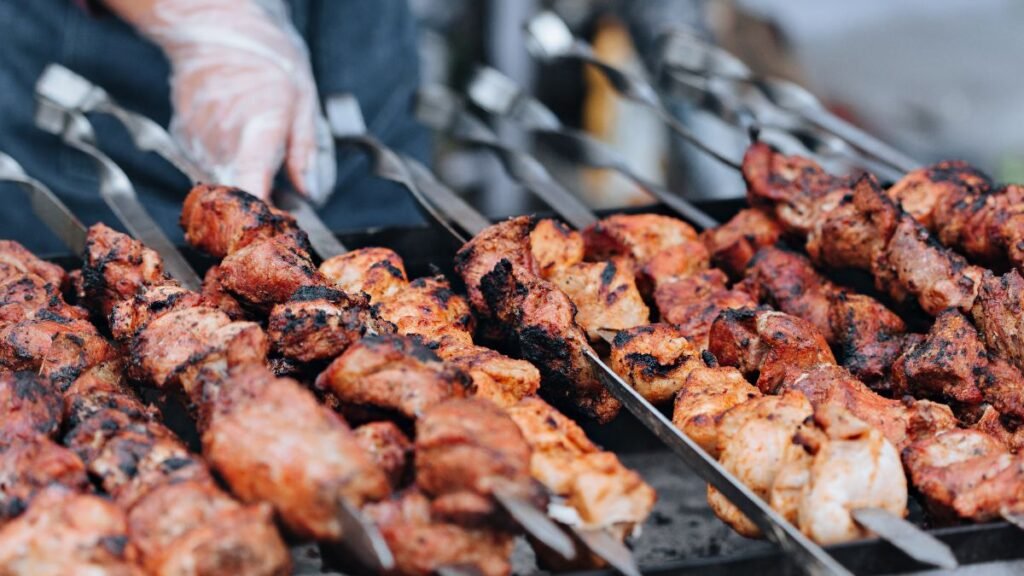
Churrasco embodies the essence of Brazilian barbecue, celebrated for its unique grilling methods and diverse cuts of meat. This traditional dining experience showcases a variety of grilled meats, captivating food lovers with the rich flavors of Brazil. In churrascarias, patrons enjoy tender cuts of meat sliced directly onto their plates by skilled waiters, creating a communal atmosphere that enhances the dining experience.
Different Cuts of Meat in Churrasco
The success of churrasco lies in the selection of meats, with each cut offering distinct flavors and textures. Key cuts include:
| Cut of Meat | Description |
|---|---|
| Picanha | Sirloin cut is known for its rich taste, commonly used for skewering and grilling. |
| Alcatra | Flank steak provides a satisfying chew and deep flavor, favored for its juiciness. |
| Fraldinha | Slow-cooked beef ribs, which are tenderized to perfection, offer a hearty option. |
| Costela | Beef ribs that are slow-cooked to enhance tenderness, offering a hearty option. |
Accompaniments to Enhance Your Churrasco Meal
A plate of churrasco goes beyond grilled meats, embracing a range of accompaniments that elevate the dining experience. These typically include:
- Farofa: Toasted cassava flour mixed with spices, adding a crunchy texture.
- Chimichurri Sauce: A vibrant herb sauce that adds freshness and flavor to grilled meats.
- Grilled Vegetables: Seasonal vegetables that complement the meats and provide a colorful display.
Other Notable Dishes in Brazilian Cuisine
Brazilian cuisine is not only defined by its famous meals but also flourishes with an array of regional dishes that showcase the nation’s culinary diversity. From north to south, each region offers unique flavors and specialty dishes that highlight local ingredients and traditions.
Exploring Regional Favorites
Among the notable Brazilian cuisine specialties, Baião de Dois stands out as a rustic favorite, effectively merging rice and beans with the aromatic spices typical of the Northeast. Another regional gem, Bobó de Camarão, delights with its creamy shrimp and yucca puree, exemplifying the rich seafood culture that is prevalent along the coast. These regional dishes reflect the local agricultural practices and cultural influences, ensuring that each plate tells a distinctive story.
Unique Ingredients Used in Various Dishes
The depth of Brazilian cuisine lies in its unique ingredients. Staples like manioc, used in dishes such as farofa and beiju, offer a glimpse into the indigenous roots of the cuisine. Tropical fruits, such as açaí and mango, provide vibrant flavors and essential nutrients. Their inclusion in various recipes highlights the culinary diversity that makes Brazilian cuisine so captivating. These elements contribute to both the health benefits and the overall appeal of Brazilian cuisine.
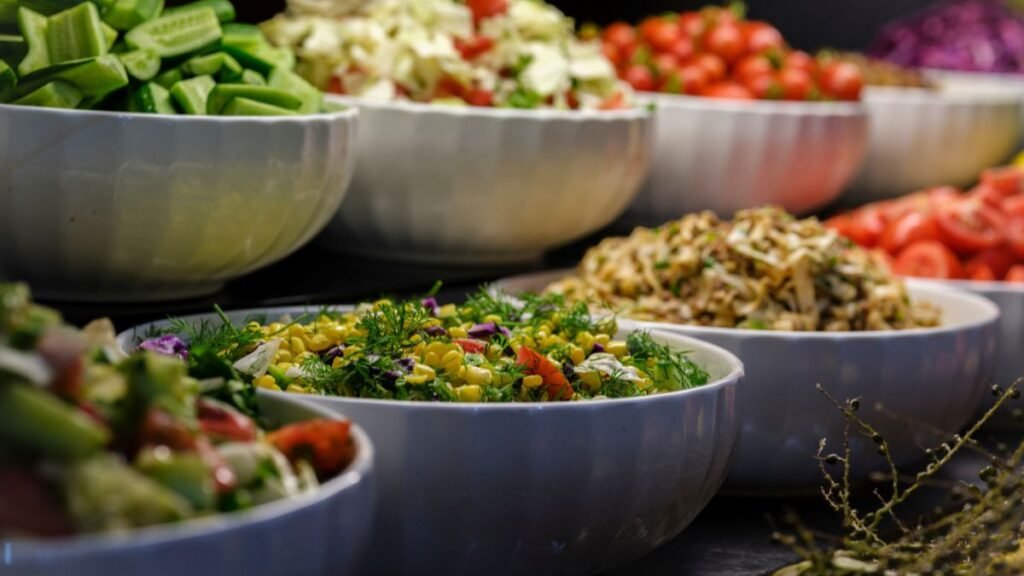
The Role of Desserts in Brazilian Cuisine
Desserts in Brazil hold a special place in the culinary landscape, symbolizing joy and togetherness. They are often central to celebrations and family gatherings, reflecting the country’s rich cultural heritage. Among the beloved Brazilian sweets are quindim and canjica, each highlighting local ingredients while offering a taste of tradition.
Quindim, a luscious coconut and egg custard, showcases the tropical flavors cherished in Brazilian desserts. Its glossy appearance and delightful sweetness make it a must-try. Canjica, on the other hand, is a creamy corn pudding frequently enjoyed during festivals, capturing the essence of Brazilian festivities through its warm, comforting flavors.
The cultural significance of these traditional desserts extends beyond taste; they serve as a connection to Brazil’s diverse history and regional variations. Incorporating unique ingredients found in local markets allows these sweets to thrive and evolve, preserving their heritage while appealing to modern palates.
Fusion Cuisine: Global Influences on Brazilian Dishes
Brazilian fusion cuisine emerges as a vibrant celebration of the country’s rich culinary heritage, blending global influences with its native traditions. This fusion reflects a culinary modernization that resonates with both local and international palates. Chefs skillfully craft innovative dishes that showcase traditional Brazilian ingredients while incorporating flavors from around the world.
For example, some eateries serve sushi rolls adorned with tropical fruits like mango and passion fruit, highlighting Brazil’s exotic offerings. Pizza aficionados may find pies generously topped with catupiry cheese, a local delight that marries well with classic toppings in a truly unique manner.
The integration of global influences not only enhances the dining experience but also broadens the appeal of Brazilian cuisine to a worldwide audience. As Brazilian fusion cuisine continues to evolve, diners are presented with creative combinations that elevate ordinary meals into extraordinary culinary adventures. Learn more about Brazilian Drinks
Conclusion
The exploration of Brazilian cuisine reveals a rich tapestry of history, culture, and community. From hearty stews like feijoada to delightful desserts like brigadeiro, each dish offers a glimpse into Brazil’s diverse culinary heritage. As you explore Brazilian cuisine, you’ll find iconic dishes that not only satisfy the palate but also tell a story of a vibrant culture.
Engaging with Brazilian cuisine is more than just enjoying a meal; it’s a cultural journey that invites you to embrace the array of flavors and textures that define this nation’s culinary landscape. Whether dining at a restaurant or experimenting with recipes at home, the Brazilian culinary experience awaits, ready to transport you to the heart of Brazil.
So, let the flavors of Brazil bring joy to your table. Let the unique and bold flavors inspire your cooking and dining experiences as you endeavor to savor each iconic dish that this diverse cuisine has to offer. The journey through Brazilian gastronomy is indeed one worth taking.
FAQ
What makes Brazilian cuisine unique?
Brazilian cuisine is unique due to its vibrant blend of indigenous, African, European, and Asian influences. Each dish tells a story and reflects the country’s rich history and geographic diversity, resulting in an array of flavors, colors, and textures.
What is the origin of feijoada?
Feijoada originated from Portuguese cozido and has evolved into Brazil’s national dish, consisting of black beans and various cuts of pork. It symbolizes unity and celebration in Brazilian culture, typically enjoyed on Wednesdays and Saturdays.
What ingredients are used in Pão de Queijo?
Pão de Queijo is primarily made from tapioca flour, eggs, milk, and cheese, notably queijo minas. Its unique texture is both chewy and airy, making it a favorite snack or appetizer.
What is a traditional way to serve Coxinha?
Coxinha is traditionally served as a street food snack, enjoyed warm. It features a filling of shredded chicken mixed with spices, often consumed during social gatherings or as a quick bite.
How is Moqueca prepared?
Moqueca is prepared by stewing fish or shrimp in a rich blend of coconut milk, dendê oil, and local herbs. Cooking it in a clay pot enhances its aromas and flavors, and it’s typically served with rice and pirão.
What occasions are Brigadeiros commonly served?
Brigadeiros are typically served at birthdays, weddings, and other special occasions across Brazil. This sweet treat has evolved, with numerous variations available to suit different tastes.
What is the cultural significance of Acarajé?
Acarajé holds deep cultural significance as a traditional Bahian street food, representing Afro-Brazilian culture. It’s often sold by women in traditional attire, making it a staple of local gastronomy.
What cuts of meat are popular in Churrasco?
Popular cuts in Brazilian Churrasco include picanha, alcatra, and fraldinha. It’s characterized by communal dining, where waiters serve sliced meat directly onto plates.
What are some other notable Brazilian dishes to try?
Beyond iconic dishes, favorites like Baião de Dois, a rice-and-beans fusion, and Bobó de Camarão, a shrimp dish with yucca puree, showcase Brazil’s diverse culinary landscape.
What role do desserts play in Brazilian cuisine?
Desserts in Brazilian cuisine celebrate togetherness and joy, featuring popular sweets such as quindim, a coconut custard, and canjica, a creamy corn pudding traditionally enjoyed during festivals.
How is Brazilian cuisine evolving today?
Brazilian cuisine is evolving through fusion with global trends, as chefs create inventive dishes that blend traditional ingredients with international flavors, enhancing the culinary experience and attracting a global audience.
Easter Eggs

